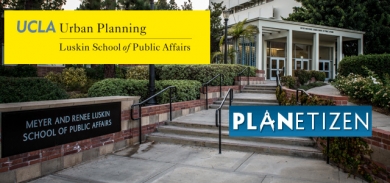My neighborhood: the Friday the 13th Paris Massacres Urban Planning professor Michael Storper’s first-hand account of the Paris attacks

By Urban Planning professor Michael Storper
The massacres occurred in the 10th and 11th arrondissements, for the most part. I moved to the 10th in 1990. At that time, there was a housing shortage in Paris and, desperate to find a place, I took one in a neighborhood I knew nothing about. It turned out to be a down-and-out, but central part of Paris. It was a declining area of small artisanal industries in metal-cutting, paper manufacture, and such. It had a lovely but abandoned 19th century barge canal, known as the Canal St. Martin, running through it. It had lots of poor people, public housing and drug traffic. Parisians called it la zone. Over the years, it gentrified. Capitalizing on the extraordinary beauty of the canal, with its art nouveau bridges and locks, and some good industrial but also bourgeois architecture, it very slowly attracted young people, hipster families and such. Cafes opened on the canal, and then the whole area became slowly converted into interesting new boutiques and restaurants and other attractions, driven in part by the rising rents in the nearby Marais and 3rd, just on the other side of the Place de la République. I have a deep attachment to the neighborhood because I’m not a latecomer, here just for the coolness; I was here when it wasn’t cool and when I often came home at night to semi-hostile youth hanging out in front of my building, playing music, smoking joints, sometimes teasing the residents (especially the women). We’ve had various rounds of negotiation with them, sometimes their parents, and so on, to resolve these issues, and sometimes there has been police intervention. With gentrification, most of that is gone, and now it seems almost too clean, a bit boring.
My building has two floors of offices. On the ground floor is an unemployment office and a center where migrants seeking political asylum can apply. The lines that snake in front of the building have changed composition in the past few years, from heavily East Asian to South Asian and of course, Syrian and Iraqi. I see and, sometimes, speak to these people. I know the security guard who keeps the line orderly. The office is closing now, as the application process is being consolidated into another center in another place.
From my living room window, on the 4th floor, I look down on a primary school. The parents bring the kids promptly at 8:30 am, and the school yard can be seen from my window, filled with raucous happy kids at recreation time. The population seems to be a balanced mix of people with Asian, African and European heritage.
This area of Paris is now one of the liveliest. The killers hit this neighborhood in order to target this young France, a world city’s pleasure and freedom zone. Rather than going after the Champs Elysées or the Eiffel Tower or the Louvre, they wanted to get a generation in its territory.
On Friday evening, a friend had organized a get-together in a wine bar in the 1st arrondissement, between Châtelet and Louvre. On the ground floor is a bar with one table, and then a subterranean wine cellar, where we gathered to drink red wines and – yes – eat cheese and charcuterie. At about 10 pm my godson called to inform me. As the evening wore on, we were told not to go out, and there were rumors of attacks spreading, some (falsely it turned out) said to be at Châtelet or Les Halles or City Hall. We lowered the steel shutters and the two young bartenders poured champagne and then we moved on to Japanese whisky. At 2, it was decided that we needed more comfort, so the friends who had organized the evening, who lived nearby, invited everyone to their place, about 500 m away. The other patrons were mostly very young, in their early 20s, and afraid to walk anywhere. We had to reassure them, as they were shaking. All of us, about 20 or so, including bartenders and other patrons, ended up at my friends’ apartment, where a large bowl of pasta and more wine and whisky were prepared for a nice 3 am dinner. Then we waited it out, checking media.
The atmosphere was a strange mix of jolly and other-worldly. But the camaraderie was really nice. A dinner of semi-strangers mixed with a group of friends, and different age groups. Too much was drunk. As it turned out, that was the pattern for the night, what was called open doors, portes ouvertes, all over the city as we waited it out.
At about 5 am, some people decided to bed down, but some of us wanted to go home. So, we almost immediately found Ubers. The Ubers and taxi drivers came out en masse, as a public service, as metro lines had been shut down.
The next day, I had an appointment, and decided to keep it, in the Marais. An eerie normality prevailed. Quieter than usual, but with a fair number of people quietly shopping. On the way home, I rode my bicycle first through the Place de la République, and there was a crowd lighting candles at the base of the statue of Marianne, the symbol of the French Republic, and the tears were flowing. From there, I went by the restaurant just across the canal from my place, Le Petit Cambodge, where I have eaten dozens of times and where 15 died. There, too, a stunned crowd, candles, notes and flowers, and the Mayor, Anne Hidalgo.
Sunday was in some ways worse for most people, as the shock of this new situation set in. The uncertainties and the gravity of a new form of urban guerilla warfare, organized and planned.
Sunday night, I went to friends’ for a dinner on the rue de la Fontaine au Roi, less than 15 minutes by foot. The city was more deserted than in August. As I reached the intersection, there it was: the two cafes and laundromat that had been shot up on Friday night, with 19 deaths. A big crowd, flowers, candles, poems, tears. These friends had whats-apped me Friday night, with Céline telling me that they could hear shots. That’s one thing for adults, but they have three kids. What do you tell your kids, who already lived through the January massacre, also in the 11th arrondissement, when your teenage daughter asks: why do they keep shooting people in our neighborhood? When Gaspard, who is six, asks: why are all those people crying in the street?


